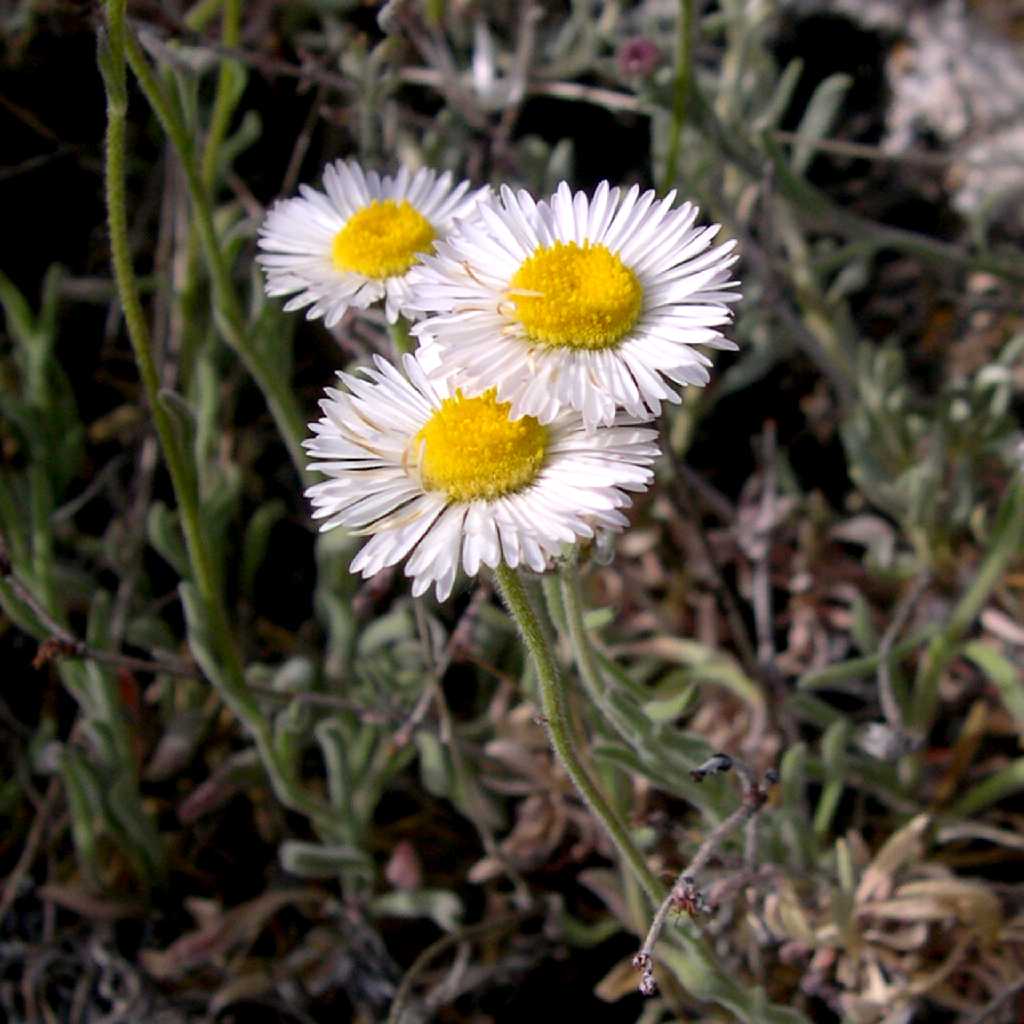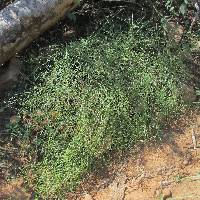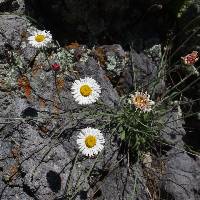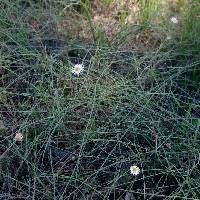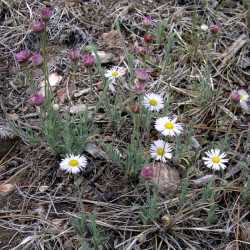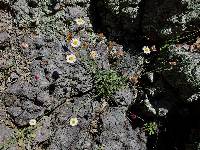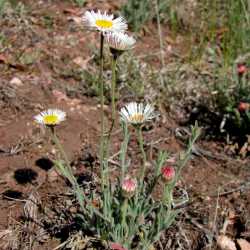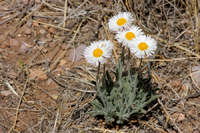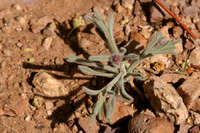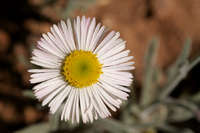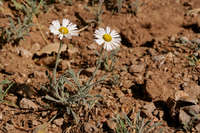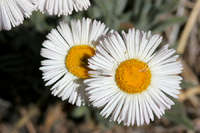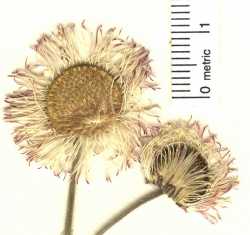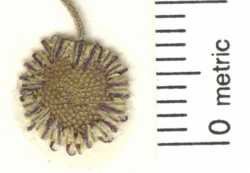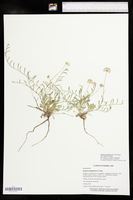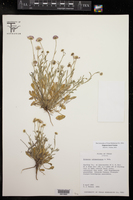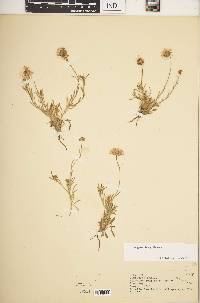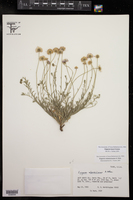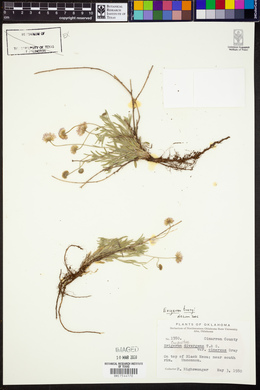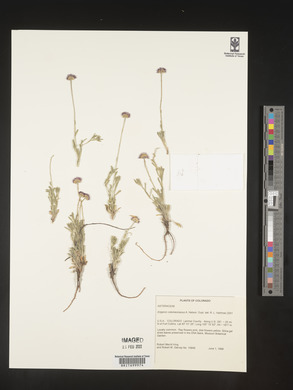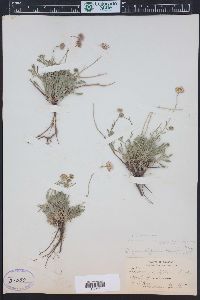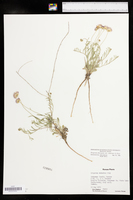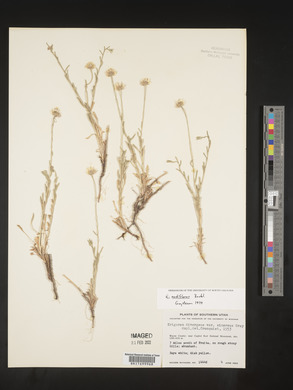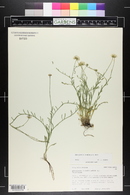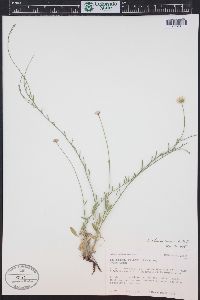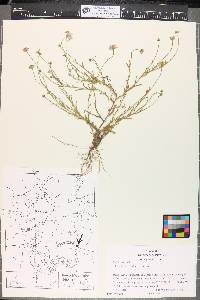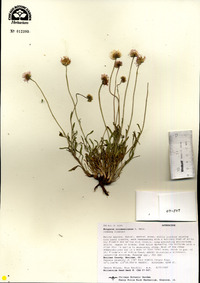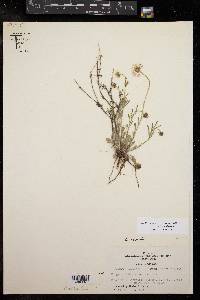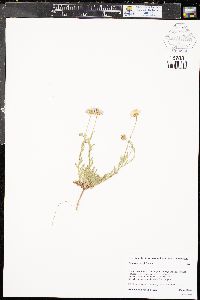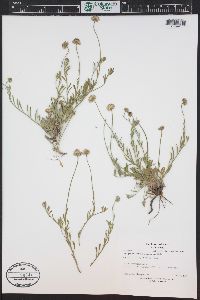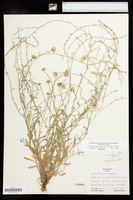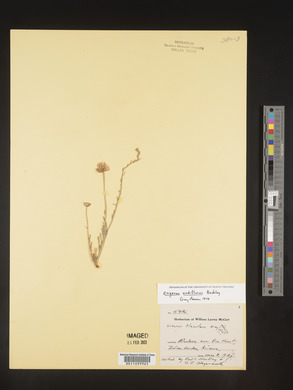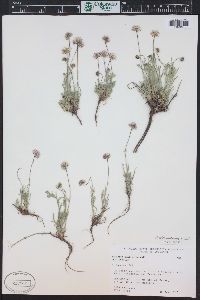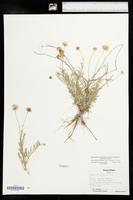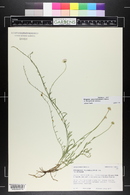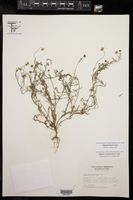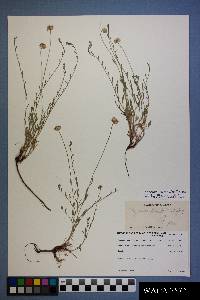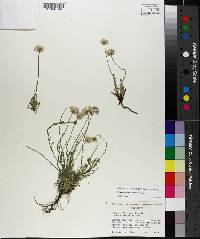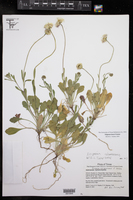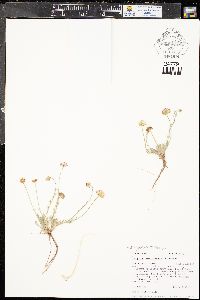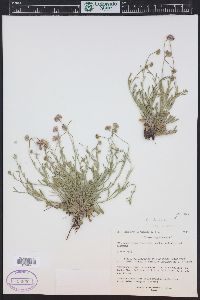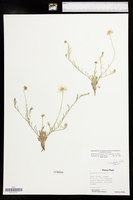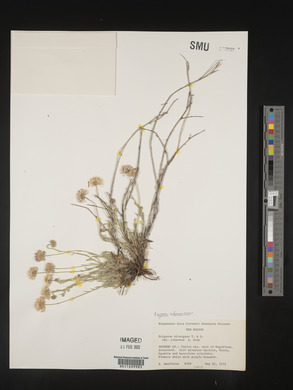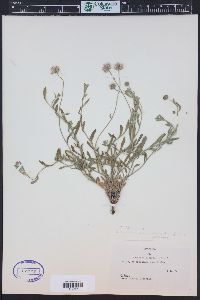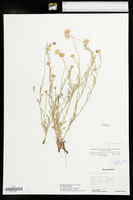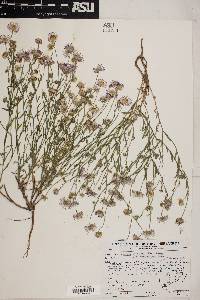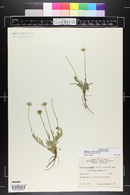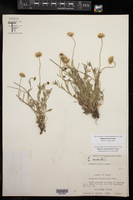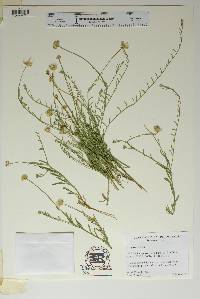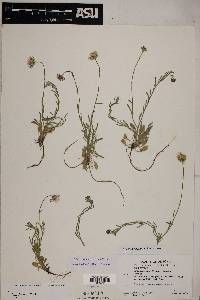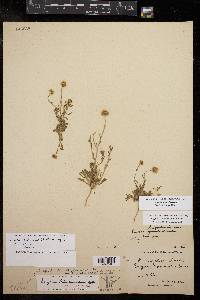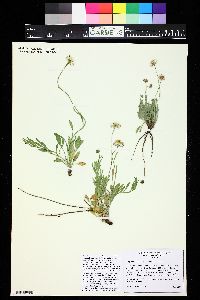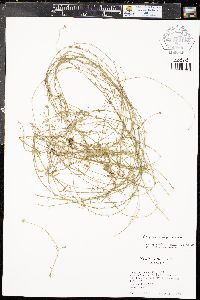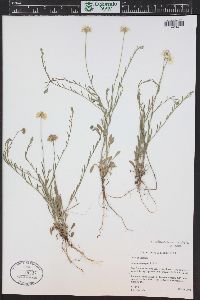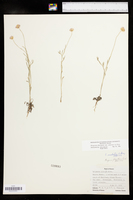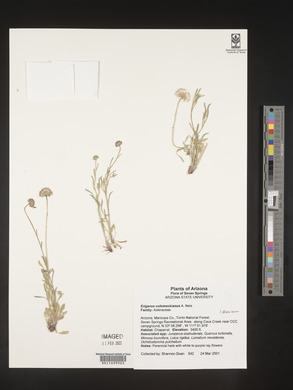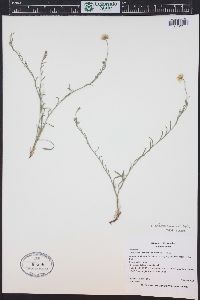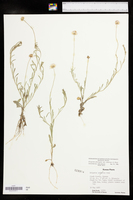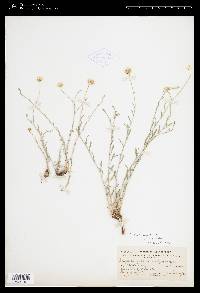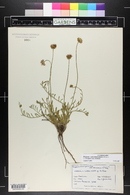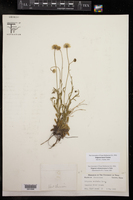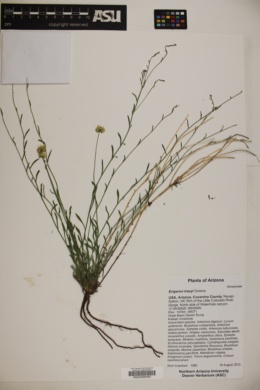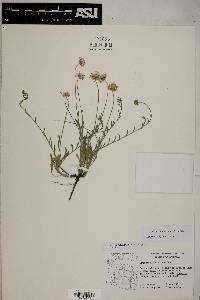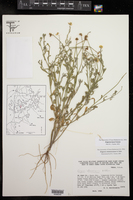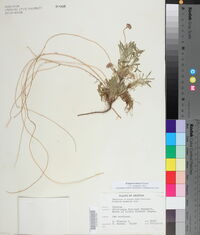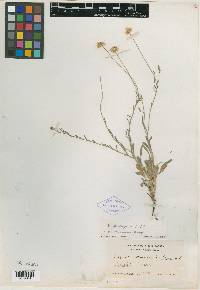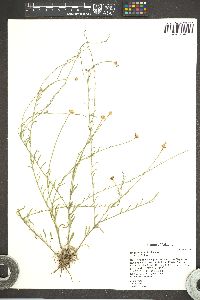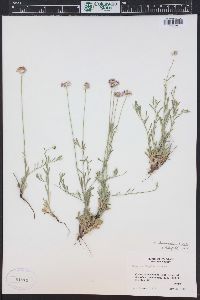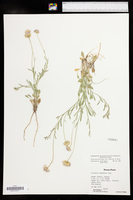Erigeron tracyi
|
|
|
|
Family: Asteraceae
Running Fleabane, more...running daisy, running fleabane
[Erigeron colomexicanus A. Nels., moreErigeron commixtus , Erigeron divergens var. cinereus A. Gray] |
Annuals, biennials, or short-lived perennials, 2.5-8(-12, 18) cm; usually taprooted, sometimes fibrous-rooted, caudices simple or branched. Stems first erect (greenish proximally), then producing herbaceous, leafy, prostrate runners (stoloniform branches, sometimes with rooting plantlets at tips), densely hirsutulous (hairs spreading-deflexed, of relatively even lengths and orientations), sparsely minutely glandular. Leaves mostly basal (persistent in early season); blades oblanceolate to spatulate (obovate-elliptic laminae), 10-30(-60) × 3-6(-12) mm, cauline abruptly reduced distally, margins entire, dentate, or lobed, faces densely hirsute, eglandular. Heads 1(-3 rarely, from midstem or proximal branches). Involucres 3.5-4.5(-6) × 6-9(-12) mm. Phyllaries in 3-4 series, sparsely to moderately hirsute, minutely glandular. Ray florets 60-130; corollas white, often purplish abaxially, sometimes with an abaxial midstripe, 5-9 mm, laminae not coiling or reflexing. Disc corollas 2-3 mm (throats indurate and slightly inflated). Cypselae 0.7-1.3 mm, 2-nerved, faces sparsely strigose; pappi: outer of setae, inner of 12-16 bristles. 2n = 27. Flowering Mar-Oct. Desert scrub, grassy slopes, oak chaparral, pinyon-juniper woodlands, Douglas fir-ponderosa pine; 700-2300(-2400) m; Ariz., Colo., Kans., Nev., N.Mex., Okla., Tex., Utah; Mexico (Baja California, Chihuahua, Coahuila, Durango, Sonora, Zacatecas). In March through June, plants of Erigeron tracyi produce leaves in a basal rosette usually with a single, erect, monocephalous, stem. Stoloniform branches are soon formed (often recognized on pressed specimens by the leaves mostly on one side of the branches), and by the end of the season (August through October), prostrate runners are usually evident, sometimes forming terminal, rooting plantlets. Erigeron tracyi is similar in habit to E. flagellaris, particularly in the herbaceous stolons or stoloniform branches; the stem pubescence of E. tracyi is different, the stolons much less commonly produce rooting plantlets at the tips, and the plants tend to be perennial with woody or lignescent caudices, although they are variable both in habit and duration. Apparent hybrids with E. modestus and E. flagellaris are occasionally encountered, and the most common form of E. tracyi is perhaps (speculative) a stabilized, apomictic hybrid between the latter and E. divergens. All chromosome counts thus far have shown E. tracyi to be triploid and asynaptic.
Martin and Hutchins 1980, Heil et al 2013 Duration: Biennial Nativity: Native Lifeform: Forb/Herb General: Annual to short-lived perennial herbs, from a taproot and a simple or branched caudex; stems branched near base, densely leafy on lower portions; upper stems leafless and terminating with a single flower head; later in season the plant produces long leafy stolons. Leaves: Basal and cauline; basal leaves are petioled, the blades broadly oblanceolate to spatulate, up to 7 cm long and 1 cm wide; cauline leaves are alternate, sessile, and smaller than the basal leaves, blades 1-2 cm long; leaf surfaces are densely cinereous-hirsute, the margins entire or occasionally toothed or lobed. Flowers: Flower heads showy and radiate, the rays white and the discs yellow; heads solitary at the ends of long leafless peduncles; involucres hemispheric, 4 mm high and 6-9 mm wide, the phyllaries in 3-4 series, hirsute and minutely glandular; ray flowers 75 or more per head, the lamina (ray petals) 5-10 mm long and about 1 mm wide, white and often with a purplish underside (abaxial surface); disc flowers yellow. Fruits: Achenes 2-nerved and sparsely strigose; topped with a double pappus of bristles. Ecology: Found on dry slopes, from 5,500-8,000 ft (1676-2438 m); flowers April-July. Distribution: NV, UT, and AZ, east to KS, OK, and TX; south to MEX. Notes: Erigeron is a difficult genus, with many similar looking species distingushed from each other by subtle and obscure characters. A hand lens is necessary for field ID, and making a collection is generally advisable in order to have any confidence in a determination. Identify the genus as a whole from its characteristic daisy-like flowers with white to pale purple rays and yellow centers (although a few species have extremely small rays); involucres with 2-5 series of phyllaries, all about the same length (subequal); and tufts of bristles on the tops of the seeds. E. tracyi is quite similar to the common and widespread E. flagellaris; E. tracyi can be distinguished by the denser spreading hairs on its stems and flower stalks (E. flagellaris has appressed hairs); its slightly woody base; and the fact the stolons rarely root at the tips. Ethnobotany: Unknown, but other species in the genus have uses. Etymology: Erigeron means Early-Old-Man, as named by Theophrastus; tracyi is named for Samuel Mills Tracy, a 19th century American botanist. Synonyms: Erigeron divergens var. cinereus, Erigeron colomexicanus Editor: SBuckley 2010, Ahazelton 2017 |
|
|
|

